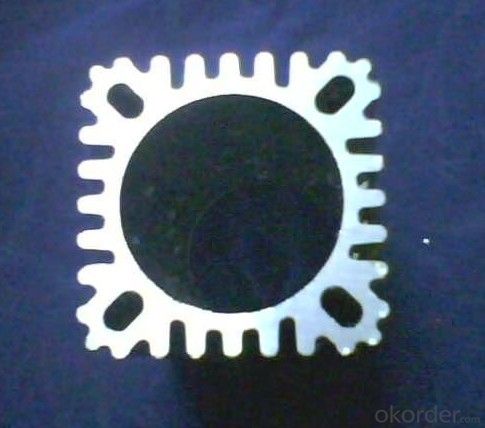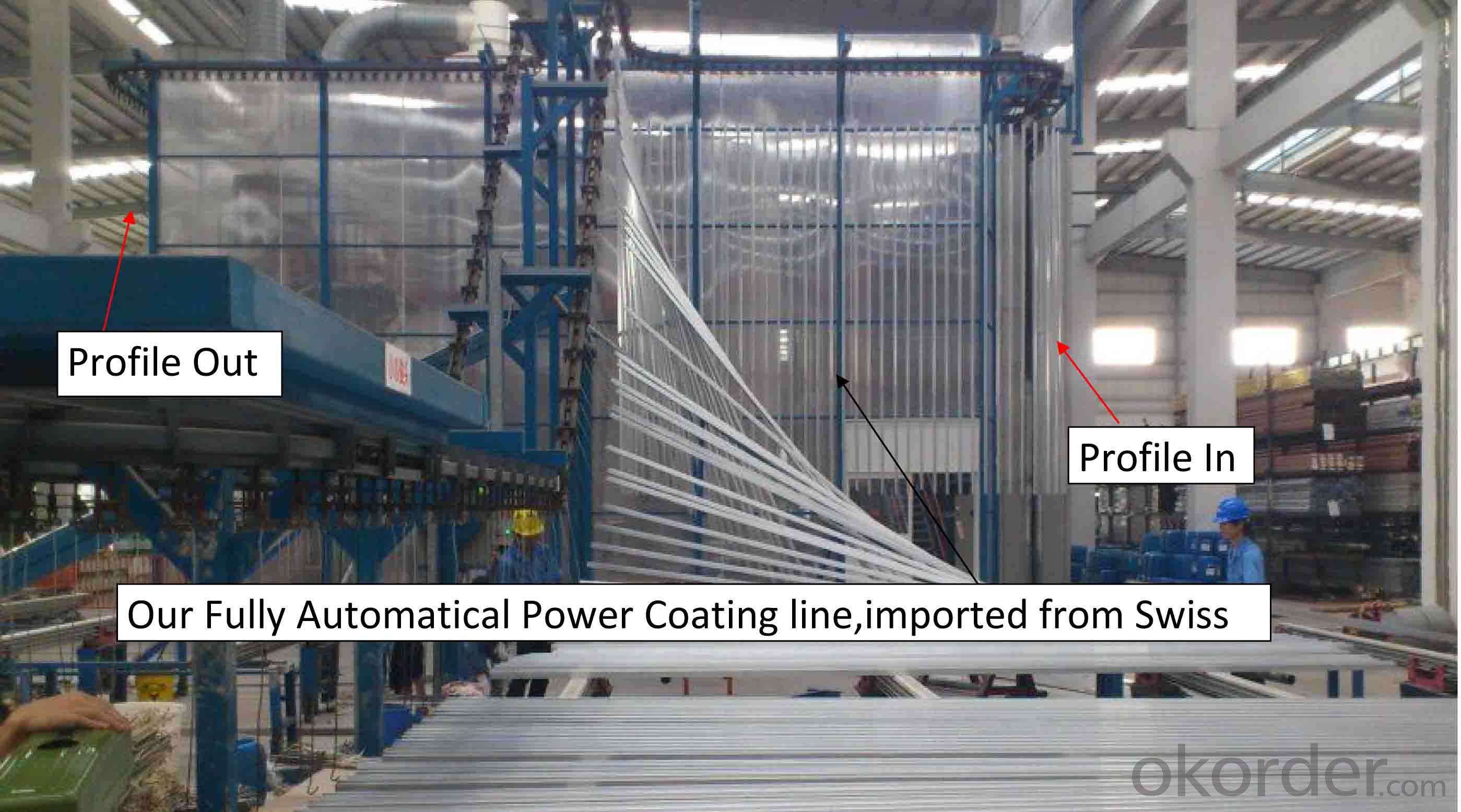Industial Aluminum Profile hot selling DW-002
- Loading Port:
- Shekou
- Payment Terms:
- TT OR LC
- Min Order Qty:
- 0.5
- Supply Capability:
- 0.5 m.t./month
OKorder Service Pledge
Quality Product, Order Online Tracking, Timely Delivery
OKorder Financial Service
Credit Rating, Credit Services, Credit Purchasing
You Might Also Like
Industial Aluminum Profile
Alloy: 6063, Temper: T5, T6.
surface:mill finished,anodized3.
widely used for building,furniture,transportation



Industial Aluminum Profile
Alloy: 6063,
Temper: T5, T6.
building,furniture,transportation,machine
Anodized silver, anodized champagne, anodized bronze, anodized black, powder coated, electrophoresis, polished, Thermal break, wooden grain.
Length: 5.8---6 meters, depend on customers' requested.
Packing: kraft paper, carton, or on customers' requested.
Exported to different countries worldwide.
- Q:Can aluminum profiles be used in cleanroom environments?
- Cleanroom environments can indeed utilize aluminum profiles. With its lightweight and adaptable nature, aluminum possesses a multitude of desirable qualities that make it well-suited for cleanroom applications. Being non-corrosive, non-magnetic, and boasting a high strength-to-weight ratio, aluminum is an ideal material for constructing cleanroom structures like walls, partitions, and equipment racks. Moreover, the assembly and disassembly of aluminum profiles are effortlessly accomplished, allowing for flexible cleanroom configurations and future modifications. These profiles can also be seamlessly integrated with other materials such as glass, acrylic, or stainless steel, in order to meet specific cleanroom requirements. Furthermore, aluminum profiles can be enhanced by anodization or coatings to fortify their cleanliness and resistance to contamination. Anodization furnishes a protective layer on the aluminum surface, rendering it more resistant to scratches and wear. Coatings like epoxy or powder coatings can further enhance the profiles' durability and cleanliness. In summary, aluminum profiles offer a multitude of advantages for cleanroom applications, including their lightweight nature, strength, corrosion resistance, and design flexibility.
- Q:Can aluminum profiles be used in the production of agricultural equipment?
- Aluminum profiles have the potential to be utilized in the manufacturing of agricultural equipment. The versatility and lightweight characteristics of aluminum provide numerous benefits for agricultural applications. Its resistance to corrosion is crucial when considering equipment that is exposed to outdoor conditions and various farming chemicals. Moreover, aluminum profiles have the capability to be easily molded and customized to meet specific design requirements, enabling the creation of intricate and functional agricultural equipment. The lightweight nature of aluminum also simplifies the transportation and handling of the equipment, resulting in reduced labor costs. Additionally, aluminum profiles are recyclable, making them an environmentally conscious choice for the production of agricultural equipment. In conclusion, incorporating aluminum profiles into agricultural equipment can enhance durability, efficiency, and sustainability within the farming industry.
- Q:How do aluminum profiles resist corrosion?
- Aluminum profiles have a natural resistance to corrosion due to the formation of a protective oxide layer on their surface. When exposed to oxygen in the air, aluminum reacts and forms a thin layer of aluminum oxide. This oxide layer acts as a barrier, preventing further oxidation and corrosion of the metal underneath. The oxide layer is tightly bonded to the aluminum surface, making it extremely durable and resistant to environmental elements such as moisture, chemicals, and UV radiation. Additionally, aluminum profiles can be further enhanced with various surface treatments such as anodizing or powder coating, which provide an additional layer of protection against corrosion. These treatments not only enhance the aesthetic appeal of the profiles but also improve their resistance to corrosion, making them suitable for a wide range of applications in various industries. Overall, the natural oxide layer and the ability to apply additional protective coatings make aluminum profiles highly resistant to corrosion, ensuring their longevity and durability in different environments.
- Q:Are aluminum profiles recyclable?
- Yes, aluminum profiles are recyclable. Aluminum is a highly recyclable material, meaning it can be melted down and reused multiple times without losing its quality. Aluminum profiles, which are used in various applications such as construction, transportation, and manufacturing, can be easily recycled by collecting them from end-of-life products or scrap material and sending them to a recycling facility. The recycling process involves shredding the aluminum profiles into small pieces, removing any impurities, melting the aluminum, and then casting it into new profiles or other aluminum products. Recycling aluminum profiles helps to conserve natural resources, reduce energy consumption, and minimize environmental impact compared to producing new aluminum from raw materials.
- Q:Are aluminum profiles suitable for escalator handrails?
- Yes, aluminum profiles are suitable for escalator handrails. They are lightweight, durable, and have excellent corrosion resistance, making them an ideal choice for ensuring safe and reliable handrail operation on escalators.
- Q:Can aluminum profiles be used for balustrades?
- Yes, aluminum profiles can be used for balustrades. Aluminum is a lightweight and durable material that is commonly used in construction for its strength and resistance to corrosion. It is also easy to shape and work with, making it ideal for creating various designs and styles for balustrades. Additionally, aluminum profiles can be powder coated or anodized to provide a decorative finish and enhance its durability. Overall, aluminum profiles offer a practical and aesthetically pleasing solution for balustrades in both residential and commercial settings.
- Q:Can aluminum profiles be used in exhibition or trade show displays?
- Exhibition or trade show displays can incorporate aluminum profiles, which are lightweight, durable, and versatile. These profiles are an excellent option for constructing exhibition displays due to their ability to be easily assembled and disassembled, enabling swift setup and dismantling at trade shows. Furthermore, aluminum profiles can be tailored to produce diverse shapes and sizes to accommodate various exhibition booth designs. They can also be effortlessly combined with other materials like fabric, glass, or acrylic panels to create visually appealing and professional displays. Ultimately, aluminum profiles present a practical and cost-effective solution for exhibition or trade show displays.
- Q:What are the advantages of using aluminum profiles in window and door frames?
- There are several advantages of using aluminum profiles in window and door frames. Firstly, aluminum is a lightweight material, making it easier to handle and install. Additionally, it is highly durable and resistant to corrosion, ensuring long-lasting performance. Aluminum profiles also offer excellent thermal insulation, helping to reduce energy consumption and maintain comfortable indoor temperatures. Moreover, aluminum is highly versatile, allowing for various design options and customization. Finally, aluminum is an environmentally friendly choice, as it is recyclable and has a low carbon footprint.
- Q:Can aluminum profiles be used in signage and display applications?
- Yes, aluminum profiles can definitely be used in signage and display applications. Aluminum is a lightweight and versatile material that offers many benefits for these purposes. It is durable, corrosion-resistant, and can withstand various weather conditions, making it suitable for both indoor and outdoor applications. Aluminum profiles can be easily customized in terms of shape, size, and finish, allowing for the creation of unique and eye-catching signs and displays. Additionally, aluminum profiles can be easily assembled and disassembled, making them convenient for transportation and installation. Overall, aluminum profiles provide a great solution for signage and display applications due to their durability, versatility, and aesthetic appeal.
- Q:What are the different extrusion methods used for aluminum profiles?
- Aluminum profiles can be produced using various extrusion methods. Here are some commonly employed techniques: 1. The most frequently used method is direct extrusion. It involves heating an aluminum billet and forcing it through a die by means of a ram. The aluminum is shaped into the desired form as it passes through the die. Direct extrusion is known for its efficiency and cost-effectiveness. 2. Indirect extrusion, on the other hand, requires the billet to remain stationary while the die moves towards it. The die pushes the aluminum through the stationary billet, resulting in the desired shape. This method is often favored for intricate shapes or when precision is crucial. 3. Impact extrusion employs a punch to forcefully drive the aluminum billet into a die cavity. The high impact causes the material to flow into the die and take on its shape. This method is commonly used for manufacturing hollow parts or tubes. 4. Hydrostatic extrusion relies on the use of a fluid, such as oil or water, to pressurize the billet and guide it through a die. The elevated fluid pressure enables greater control and precision in shaping the aluminum. Hydrostatic extrusion is typically chosen for producing high-quality, strong aluminum profiles. 5. Cold extrusion takes place at room temperature, with the aluminum billet being extruded without heating. The lower temperature contributes to increased strength and improved surface finish. Cold extrusion is popular for creating small, intricate aluminum profiles. Each of these extrusion methods offers its own set of advantages and is suitable for different applications. Factors such as profile complexity, desired strength, surface finish requirements, and cost considerations play a role in determining the most suitable method.
1. Manufacturer Overview |
|
|---|---|
| Location | |
| Year Established | |
| Annual Output Value | |
| Main Markets | |
| Company Certifications | |
2. Manufacturer Certificates |
|
|---|---|
| a) Certification Name | |
| Range | |
| Reference | |
| Validity Period | |
3. Manufacturer Capability |
|
|---|---|
| a)Trade Capacity | |
| Nearest Port | |
| Export Percentage | |
| No.of Employees in Trade Department | |
| Language Spoken: | |
| b)Factory Information | |
| Factory Size: | |
| No. of Production Lines | |
| Contract Manufacturing | |
| Product Price Range | |
Send your message to us
Industial Aluminum Profile hot selling DW-002
- Loading Port:
- Shekou
- Payment Terms:
- TT OR LC
- Min Order Qty:
- 0.5
- Supply Capability:
- 0.5 m.t./month
OKorder Service Pledge
Quality Product, Order Online Tracking, Timely Delivery
OKorder Financial Service
Credit Rating, Credit Services, Credit Purchasing
Similar products
New products
Hot products
Related keywords
































